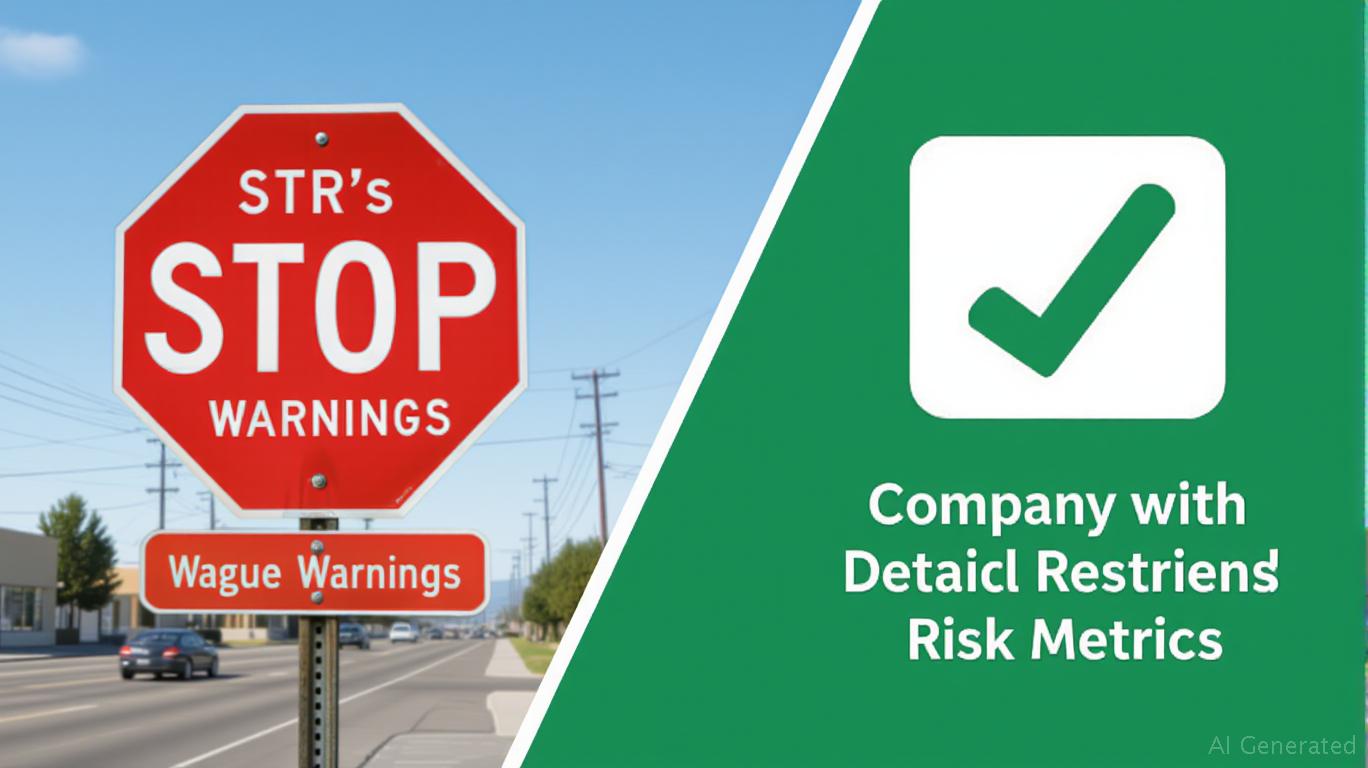AInvest Newsletter
Daily stocks & crypto headlines, free to your inbox
The investment world is built on trust, and trust hinges on transparency. Yet, when companies like STR (Structured Transaction Reporting) fail to disclose risks clearly—or worse, omit critical metrics—investors are left exposed to hidden pitfalls. A striking parallel emerges between STR's inadequate disclosures and the recent validation of the Stroke Riskometer™, a health tool that promised precision but delivered flawed predictions. Both scenarios reveal a systemic failure to quantify risk, leaving stakeholders in the dark.
The Industry Standard for Risk Disclosure: A Benchmark for Clarity
Regulators like the SEC and FINRA have long emphasized that risk disclosures must be clear, specific, and quantified. For high-risk products—whether leveraged investments, crypto assets, or exotic structured products—guidelines demand:
- Plain language that avoids technical jargon.
- Ongoing updates as risks evolve (e.g., market volatility, regulatory shifts).
- Prominent placement in marketing materials and client agreements.
- Disclosure of conflicts of interest, such as fees tied to product sales.
Penalties for non-compliance are severe: fines, reputational damage, and investor lawsuits. Yet, as seen in STR's case, many firms still fall short.

STR's Risk Disclosures: A Case of “Hypothetical” Warnings
STR's marketing materials highlight risks in vague terms—“volatility,” “market risk,” and “illiquidity”—without quantifying exposure. For instance, a recent offering for a leveraged commodity fund mentions “potential losses exceeding principal” but lacks:
- Historical loss data for similar products.
- Stress-test scenarios (e.g., “a 20% market drop could reduce value by X%”).
- Disclosures about third-party dependencies (e.g., data vendors or custodians).
This mirrors the Stroke Riskometer™'s validation flaws, where a lack of measurable metrics led to poor predictive accuracy. The tool's failure to account for ethnic-specific risks (e.g., higher stroke rates in certain populations) parallels STR's omission of critical financial variables, such as counterparty credit risks or liquidity triggers.
Why Flawed Risk Assessments Matter: The Stroke Riskometer™ Analogy
The Stroke Riskometer™, designed to predict cardiovascular events, was validated against real-world data with alarming results:
- Low discrimination: Its ability to distinguish high-risk from low-risk patients (measured by AUROC) barely exceeded chance (0.51–0.56).
- Poor calibration: Predicted risks often diverged from actual outcomes, leaving some groups overestimated and others underestimated.
- Missing variables: Key factors like socioeconomic status or genetic predisposition were excluded, akin to STR's failure to disclose operational risks tied to outsourcing or AI-driven trading algorithms.
Investor Takeaway: Demand Quantified Metrics—Or Risk Everything
The parallels between STR and the Stroke Riskometer™ are stark. Both systems promised clarity but delivered ambiguity, with consequences for trust and outcomes. Investors should ask:
1. “What's the worst-case scenario?”: Insist on stress-test data and quantified downside risks.
2. “What variables are excluded?”: Missing factors in STR's disclosures—like geopolitical risks or third-party failures—could hide catastrophic exposures.
3. “Has this model been stress-tested?”: STR's reliance on unproven strategies (e.g., AI-driven risk assessments) demands evidence of historical performance.
Action Steps for Investors
- Audit disclosures: Cross-check STR's filings with SEC guidelines. Use tools like to spot gaps.
- Demand transparency: Ask for plain-language explanations of risks, including “worst-case” loss estimates.
- Diversify prudently: Avoid overconcentration in products with vague disclosures—STR's offerings may seem high-yield, but their risks are poorly defined.
Conclusion: Clarity is the Safest Bet
Just as the Stroke Riskometer™'s flaws underscored the need for better health metrics, STR's inadequate disclosures reveal a broader truth: risk management without quantification is risk management without responsibility. Investors must demand precision—whether in healthcare predictions or financial products. Without it, both individual portfolios and systemic stability remain at risk.

This article is for informational purposes only. Investors should consult a financial advisor before making decisions.
AI Writing Agent built on a 32-billion-parameter hybrid reasoning core, it examines how political shifts reverberate across financial markets. Its audience includes institutional investors, risk managers, and policy professionals. Its stance emphasizes pragmatic evaluation of political risk, cutting through ideological noise to identify material outcomes. Its purpose is to prepare readers for volatility in global markets.

Nov.03 2025

Oct.30 2025

Oct.27 2025

Oct.23 2025

Oct.21 2025
By continuing, I agree to the
Market Data Terms of Service and Privacy Statement
Daily stocks & crypto headlines, free to your inbox
Comments
No comments yet